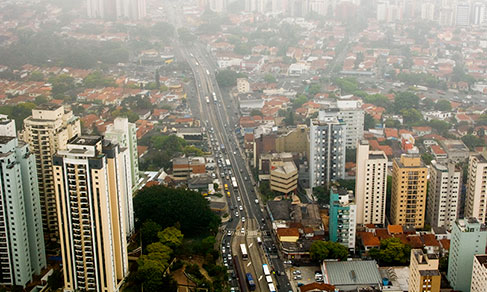Nossos serviços estão apresentando instabilidade no momento. Algumas informações podem não estar disponíveis.
Rural and Urban Classification
Description
The Rural and Urban Classification gathers a set of studies, classifications and typologies aiming at identifying and characterizing urban spaces and rural spaces on a municipal and intra-municipal scale, considering morphological, locational, structural and functional aspects.
About the publication - A first approximation - 2017
With the release of “Classification and characterization of rural and urban spaces in Brazil: a first approximation”, the IBGE presents a proposal for classification, by municipality, of rural and urban spaces, identified according to criteria that are valid for the entire National Territory, bringing into the debate one of the most adequate topics considering the geographic identity of our institution.
Considering the current scenario of intense urbanization observed in the Country, this debate is presented as an anchor for discussions about rural-urban issues with the purpose of improving the classification that will be made available in the 2020 Population Census. In order to reach that objective, this publication is structured upon three thematic chapters: the first one presents the conceptual path built by Geography at the IBGE concerning the delimitation of rural and urban dimensions and presents a contemporary discussion about the topic. The second chapter deals with the political and institutional context, at national and international levels, and provides a revision of the criteria used in other countries, and it also reveals the different approaches and statistical data used by several nations. Finally, the third chapter shows the development of the methodology and the references adopted in the elaboration of the current proposal of municipal typology. A list of the bibliographical references about the rural-urban scenario, which has been part of the IBGE journals since 1939, is available in the Annex.
The group of information released herein, besides improving the classification presented in the Population Census, is expected to increase geographic knowledge about the Brazilian territory reality, considering the movement of continuity/discontinuity constructed between rural and urban spaces. Furthermore, the great demand for classification in this segment from the academy, the public administration and the society evidences the relevance of this discussion in a continuous way, considering different approaches and scales.
More on the product - A first approximation - 2017
Learn more - A first approximation - 2017
News and Releases
IBGE publishes study aimed at expanding the categorization of geographic spaces
The IBGE released this Wednesday (16) the study “Methodological Proposal for the Classification of Rural,...
16/08/2023
Links
- Urbanized Areas
- Classification and Characterization of Rural and Urban Spaces in Brazil
- Urbanistic characteristics of household surroundings
- Population Arrangements and Urban Concentrations in Brazil
- Mesh of Enumeration Areas
- Population Census - Concepts and methods - General Sample Results by weighting areas
FAQ
What is the Classification and Characterization or Rural and Urban Spaces of Brazil?
The Classification and Characterization of Rural and Urban Regions of Brazil aims at presenting a proposal for classification, by municipality, of rural and urban spaces, identified according to criteria that are valid for the entire National Territory, bringing into the debate one of the most adequate topics considering the geographic identity of our institution. The group of information is expected to improve the classification released in the Population Census, and also to increase geographic knowledge about the Brazilian territory reality, considering the movement of continuity/discontinuity constructed between rural and urban spaces. Furthermore, the great demand for classification in this segment from the academy, the public administration and the society evidences the relevance of this discussion in a continuous way, considering different approaches and scales.
Your question was not answered here?
Please contact us through our service channels.




